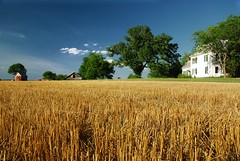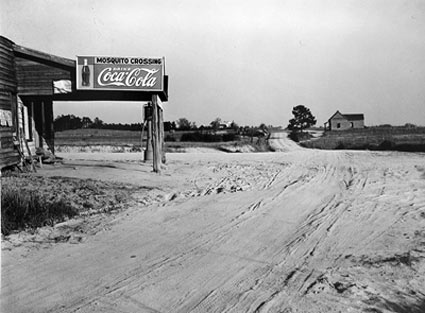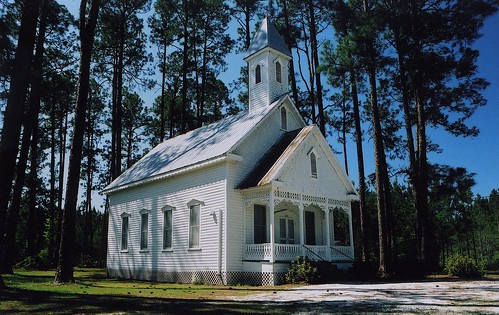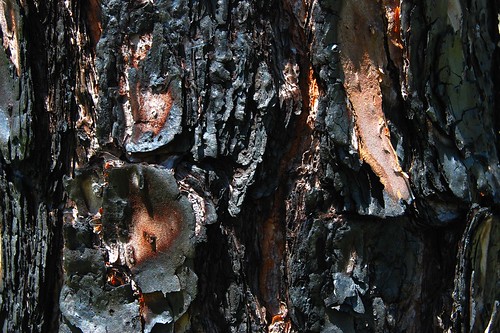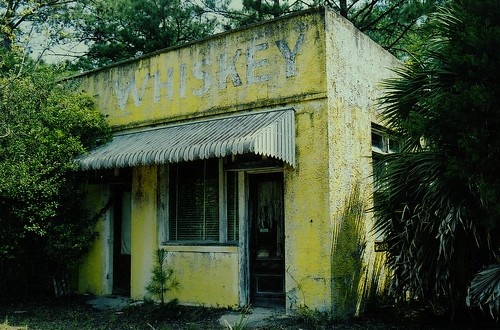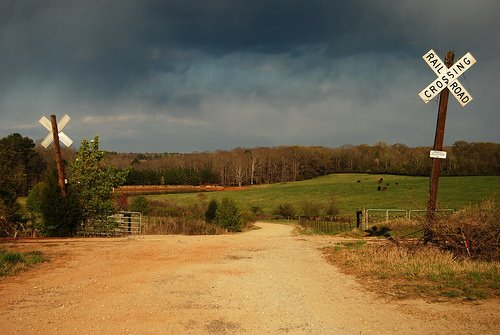 Waking up on day 3, I saw that it had snowed just a enough overnight. The frozen sleet was covered with a layer of snow that provided some traction, and also made everything pretty - for a short while anyway. These photos were taken in the morning of February 13 - by noon, things were melting fast.
Waking up on day 3, I saw that it had snowed just a enough overnight. The frozen sleet was covered with a layer of snow that provided some traction, and also made everything pretty - for a short while anyway. These photos were taken in the morning of February 13 - by noon, things were melting fast. Winter Storm February 2014
 Waking up on day 3, I saw that it had snowed just a enough overnight. The frozen sleet was covered with a layer of snow that provided some traction, and also made everything pretty - for a short while anyway. These photos were taken in the morning of February 13 - by noon, things were melting fast.
Waking up on day 3, I saw that it had snowed just a enough overnight. The frozen sleet was covered with a layer of snow that provided some traction, and also made everything pretty - for a short while anyway. These photos were taken in the morning of February 13 - by noon, things were melting fast. The Story of the Iron Horse
The day after the incident, the university moved the sculpture to a secret hiding place; R.I. Brittain, a university official. said it was unfortunate that students ''on the college level'' had minds on the level of ''grammar school or nursery children'' and ''react violently to anything new, with which they have not had previous experience.'' In 1959, the Iron Horse was moved to its current location on a farm in Greene County, where it now sits in the middle of a corn field, facing south and away from UGA, visible from GA 15 only in the winter. Jack Curtis, owner of the farm, says they are now judging the corn crops on whether or not they can see the horse.
There have been several attempts to bring the Iron Horse back to campus but they all failed.
The Iron Horse is one of the first things I learned about when I arrived in Athens in 1988, along with The Tree That Owns Itself, The Double-Barreled Cannon, and all that Athens lore.

UPDATE 11/14/2012: The Iron Horse is getting some new landscaping soon. The Board of Regents yesterday approved the purchase of this farmland by the University of Georgia. Current UGA research plantings along College Station Road in Athens will transfer to the new land in Greene County soon.
Bostwick, GA
Bostwick, GA
Population: 365
 side. Additional rooms, apparently used for an apartment for the hotel manager and his family, were also on the ground floor. Bathrooms were located at the rear on both the ground and upper floors. The rear of the second floor was devoted mainly to a Masonic Hall, which Bostwick, an active Mason, provided for the local lodge (the masonic lodge has since moved across the street).
side. Additional rooms, apparently used for an apartment for the hotel manager and his family, were also on the ground floor. Bathrooms were located at the rear on both the ground and upper floors. The rear of the second floor was devoted mainly to a Masonic Hall, which Bostwick, an active Mason, provided for the local lodge (the masonic lodge has since moved across the street).In the 1920s, when cotton was king, Bostwick thrived. The town had two cotton gins, a cotton seed oil mill, a depot and train station, a bank, a hotel, a dry cleaning business, three doctors, a blacksmith shop, post office, and three businesses with gas pumps. Two of the gas pumps, long out of order and slowly rusting away, still stand guard on Ruark Lane today.
Bostwick in 2009:
 The Bostwick Gin is one of the few operational cotton gins left in Georgia. Sitting idly by the side of GA 83 for most of the year, it is inspected and repaired every fall and fired up for the cotton harvest which typically starts around the time of the Annual Cotton Festival which takes place every year on the first Saturday of November, and features a road race, parade (including a most impressive accumulation of tractors), arts, crafts and food. The cotton mill is in operation during the festival and visitors are invited to file through the old gin to see how this all works. It is loud and dusty but well worth the trip. All proceeds from the festival go toward the continuing restoration of the Susie Agnes Hotel.
The Bostwick Gin is one of the few operational cotton gins left in Georgia. Sitting idly by the side of GA 83 for most of the year, it is inspected and repaired every fall and fired up for the cotton harvest which typically starts around the time of the Annual Cotton Festival which takes place every year on the first Saturday of November, and features a road race, parade (including a most impressive accumulation of tractors), arts, crafts and food. The cotton mill is in operation during the festival and visitors are invited to file through the old gin to see how this all works. It is loud and dusty but well worth the trip. All proceeds from the festival go toward the continuing restoration of the Susie Agnes Hotel.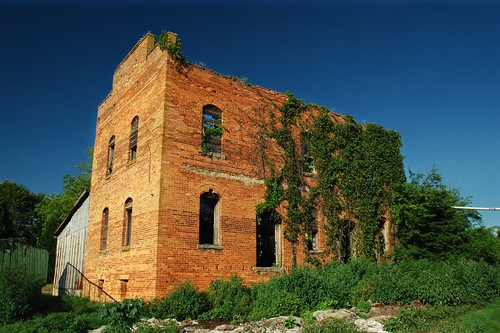 This abandoned structure adjacent to the cotton gin was once used to store fertilizer. The railroad spur ran to the right of the building (between the building and the gin). The building is often mistaken for a cotton warehouse, but Bostwick never had one.
This abandoned structure adjacent to the cotton gin was once used to store fertilizer. The railroad spur ran to the right of the building (between the building and the gin). The building is often mistaken for a cotton warehouse, but Bostwick never had one. The Susie Agnes Hotel, added to the National Register of Historic Places in 1994, is an example of a turn-of-the-century commercial and hotel building typically found Georgia's smalltowns. The building was designed by W.D. Calvin, a local Morgan County architect and builder who also designed several other buildings in Bostwick. The building was originally used as both hotel and commercial space as well as a meeting space for the local Masonic Lodge. It serves as the City Hall today.
The Susie Agnes Hotel, added to the National Register of Historic Places in 1994, is an example of a turn-of-the-century commercial and hotel building typically found Georgia's smalltowns. The building was designed by W.D. Calvin, a local Morgan County architect and builder who also designed several other buildings in Bostwick. The building was originally used as both hotel and commercial space as well as a meeting space for the local Masonic Lodge. It serves as the City Hall today. The Bostwick Supply Company, the area country store that once also housed the local post office and bank, had remained in operation as a general store and later, video rental, until March 2009. You could stop by to pick up a few nails, buy some hoop cheese, marvel at the collection of old stuff and remnants of the bank inside the store, pet Ringo the dog, and then grab a hot dog and a coke and hang out on the porch to watch the world go by. If you'd hang out long enough you could catch one of the Ruarks stopping by, and you could talk cotton; but eventually, the bad economic times and a crumbling building forced the store to close its doors for now. Today, it stands abandoned, but no less proud.
The Bostwick Supply Company, the area country store that once also housed the local post office and bank, had remained in operation as a general store and later, video rental, until March 2009. You could stop by to pick up a few nails, buy some hoop cheese, marvel at the collection of old stuff and remnants of the bank inside the store, pet Ringo the dog, and then grab a hot dog and a coke and hang out on the porch to watch the world go by. If you'd hang out long enough you could catch one of the Ruarks stopping by, and you could talk cotton; but eventually, the bad economic times and a crumbling building forced the store to close its doors for now. Today, it stands abandoned, but no less proud. 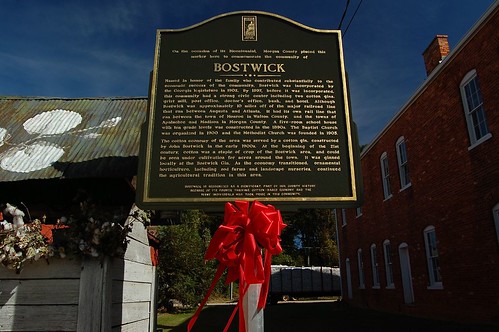
In October 2010, Hollywood descended upon Bostwick for a second time (first time was for the 1992 movie "My Cousin Vinny") to film the remake of "Footloose" featuring Kenny Wormald as Ren and Julianne Hough as Ariel (it also features at least one local that I know of: one of the workers feeding cotton into the gin called out "hey, Ren!" and they liked it enough to cut him a check and make it official). The cotton gin kept on ginning for most part, and in the end was able to keep a wooden platform that was built at the entrance to the cotton seed building, where the dance scene was filmed.

 While some buildings continue to decay (the roof of the Bostwick Store has now collapsed), and the old cotton seed truck has taken a hit, cotton is still alive here, the Cotton Gin Festival is as popular as ever, and photographers continue to visit this gem of an American smalltown. Some changes took place in the fields behind the gin: the cow pasture was turned into a field with rotating crops, trees were cut down and a huge irrigation system was installed. I get much joy out of watching these fields change through the seasons, switching between wheat, soy and corn, and, in April 2013, a spectacular canola field.
While some buildings continue to decay (the roof of the Bostwick Store has now collapsed), and the old cotton seed truck has taken a hit, cotton is still alive here, the Cotton Gin Festival is as popular as ever, and photographers continue to visit this gem of an American smalltown. Some changes took place in the fields behind the gin: the cow pasture was turned into a field with rotating crops, trees were cut down and a huge irrigation system was installed. I get much joy out of watching these fields change through the seasons, switching between wheat, soy and corn, and, in April 2013, a spectacular canola field.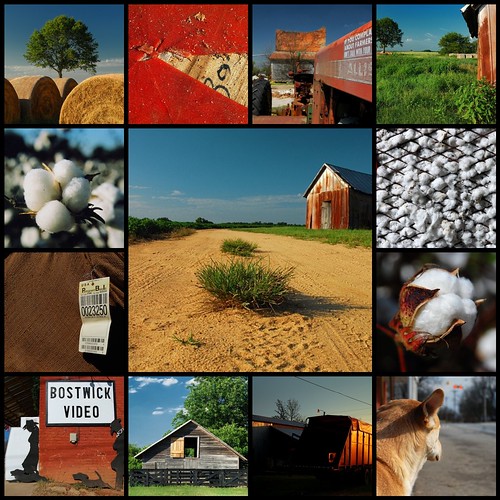
Mosquito Crossing, GA
 Mosquito Crossing, GA [Greene County]
Mosquito Crossing, GA [Greene County]
2008
Marion Post was born on June 7, 1910 in Montclair, New Jersey. Her parents divorced when she was 13, and she lived in a boarding school or with her mother in Greenwich Village where she was exposed to art at a young age. Her sister Helen studied photography in Vienna, and when Marion visited her, Helen's teacher encouraged her to pursue photography as well. Before returning to the U.S., Marion bought a camera and continued to take photos. Ralph Steiner and Paul Strand recommended her to the FSA which was so impressed with her work that she was hired on the spot. Her photographs for the FSA often explore the political aspects of poverty and deprivation as well as the beautiful positive side of America. They also often find humour in the situations she encountered. Marion Post Wolcott contributed 15,000 photos to the extensive FSA archives.
In 1941, Marion Post met Lee Wolcott. When she had finished her assignments for the FSA she married him, and gave up photography when raising a family became a priority. Marion Post Wolcott died on November 24, 1990, in Santa Barbara, CA.
In 1939, Marion Post Wolcott traveled through Greene County, GA and took the above photo of Mosquito Crossing which consists mainly of a general store that sits at the crossroads of Old Sparta and Syryp Mill Crossing Roads, between Greensboro and Sparta. Not much has changed since then. The dusty road has been paved, the sandy land has been partially reforested, and the mill adjacent to the store has not survived, but the store itself is still there and has recently been fixed up and offered for rent.
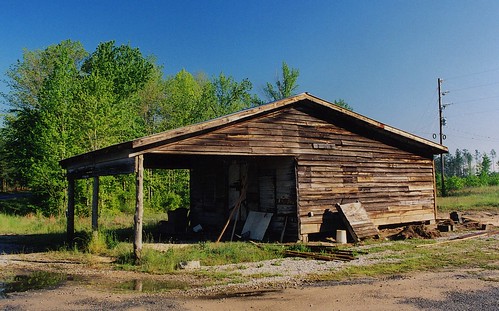 Mosquito Crossing, GA [Greene County]
Mosquito Crossing, GA [Greene County]
May 1, 2005
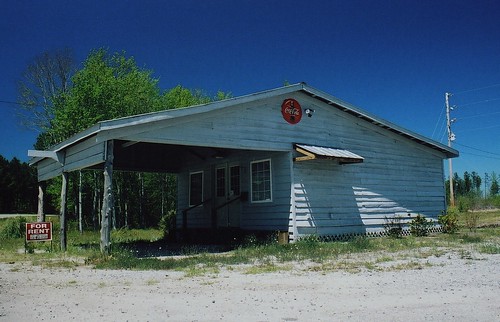 Mosquito Crossing, GA [Greene County]
Mosquito Crossing, GA [Greene County]
April 17, 2007
The FSA was established in 1935 as part of Franklin Roosevelt’s New Deal programs and given the mission to support small farmers and restore land and communities damaged by the Depression. The photographers employed under the FSA (which also included Walker Evans, Dorothea Lange, Russell Lee and Louise Rosskam) produced images that greatly impacted how both policy-makers and the general public understood the Depression.
Book recommendation: "Bound for Glory: America in Color 1939-1943" by Paul Hendrickson. It contains 175 color photos from the FSA archives.
Ruskin, GA
 e year, the colonists' number had dropped by half: the land was not very fertile, the water sources were bad, and the colonists were plagued with disease. They quickly slid into poverty and in order to settle their debts, the Ware County sheriff auctioned off all there belongings thus forcing the colony’s demise 1901. All that is left today is a church standing in by the railroad tracks. It is hard to imagine that this once was a settlement that housed 240 people. The church is very pretty and well maintained, something to be thankful for I guess.
e year, the colonists' number had dropped by half: the land was not very fertile, the water sources were bad, and the colonists were plagued with disease. They quickly slid into poverty and in order to settle their debts, the Ware County sheriff auctioned off all there belongings thus forcing the colony’s demise 1901. All that is left today is a church standing in by the railroad tracks. It is hard to imagine that this once was a settlement that housed 240 people. The church is very pretty and well maintained, something to be thankful for I guess.The Georgia Wildfires of 2007
On April 16, 2007, just 11 days after my visit, a tree fell on a power line in Waycross and started a fire which, due to drought conditions, low humidity and high winds quickly spread and entered the Okefenokee NWR four days later. There it combined with a wildfire that had started a week earlier inside the swamp. By April 30, the fire had consumed 80,000 acres (320 qkm), 20 % of which were in the refuge. By May 9, 116,000 acres (469 qkm) had been burned within the triangle formed by Waycross in the north, Fargo in the west and Folkston in the east. The next day, sub-tropical storm Andrea crossed over bringing with it more wind but unfortunately, very little rain. As a result, the fire spread to northern Florida. A separate fire started on the Okefenokee's Bugaboo Island on May 8; it spread extremely fast and soon combined with the Waycross fire. Eventually, these fires burned more than 600,000 acres (2,400 qkm) of the Okefenokee region in three months. Essentially all of the swamp burned, though the degrees of impact vary widely. During the time of these fires, smoke blanketed much of South Georgia and sometimes drifted as far north as Atlanta (300 miles) and as far south as Orlando (250 miles).
 The scars of the massive wildfire of 2007 were still visible a year later on Chesser Island in the Okefenokee NWR, about 10 miles west of Folkston. Wildfires are a common and necessary occurence in the swamp but a chain of events led to the largest wildfire in the history of both Georgia and Florida, the largest wildfire to occur outside of Alaska, and the most expensive wildfire ever for the U.S. Fish and Wildlife Service ($ 30 million).
The scars of the massive wildfire of 2007 were still visible a year later on Chesser Island in the Okefenokee NWR, about 10 miles west of Folkston. Wildfires are a common and necessary occurence in the swamp but a chain of events led to the largest wildfire in the history of both Georgia and Florida, the largest wildfire to occur outside of Alaska, and the most expensive wildfire ever for the U.S. Fish and Wildlife Service ($ 30 million).At The Liquor Store
 Georgia is one of only three states that prohibit stores to sell alcohol on Sunday (Connecticut and Indiana are the other two). Legislators have been pushing for several years to have the ban lifted, to no avail. The Sunday sales measure will be reintroduced in early 2009 and is expected to again be vigorously debated.
Georgia is one of only three states that prohibit stores to sell alcohol on Sunday (Connecticut and Indiana are the other two). Legislators have been pushing for several years to have the ban lifted, to no avail. The Sunday sales measure will be reintroduced in early 2009 and is expected to again be vigorously debated.When I moved to Georgia 20 years ago, the concept of not being able to purchase a bottle of wine on a Sunday was quite new to me. When out in a bar or club on a Saturday night, I found the custom of "last call" at 11:45 pm strange and somewhat amusing. Another law that took some getting used to was the "open container law". Interestingly, Georgia is one of seven states that have no state law against general public possession and/or consumption of an open container by a person of legal drinking age, however, nearly all local jurisdictions in Georgia do prohibit public open containers, and Athens, GA is one of them. In another ironic twist, the open container law does not apply on the University of Georgia's football game days, when the town turns into one big tailgating party where plenty of booze flows in plain view.
.jpg)
.jpg)



